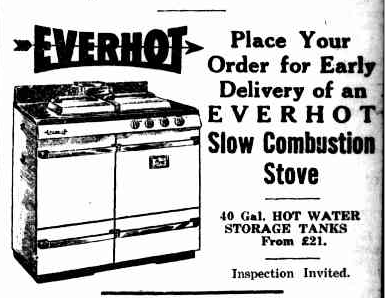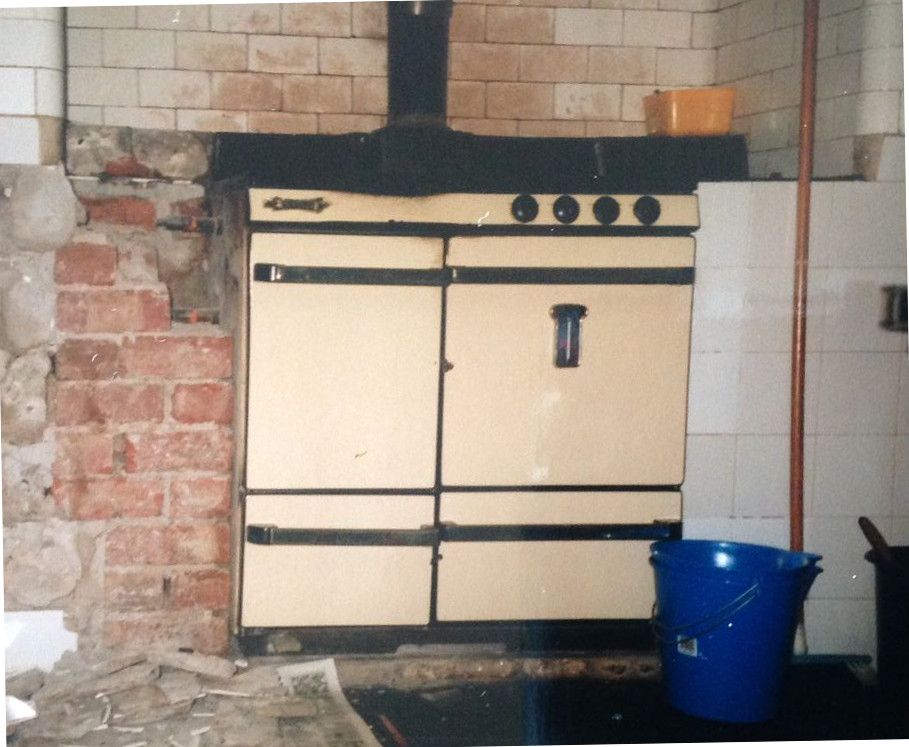We loved baking on the weekend, and Mum was happy for us to do it, but there was always this caveat: ‘you’ll have to get the oven hot first’.
I learned to cook on our 30-year old farm wood combustion stove. That’s it pictured above, just before it was replaced in the 1990s. It taught me some excellent skills for a cook , like patience, resourcefulness, and never to attempt sponge cakes.
The stove was installed in 1953 when my grandparents bought our farm. The previous owners had a six-month old Aga 4-oven stove, but things had got tight financially, and it was sold up with other assets before they left the farm. For 278 pounds according to the local paper. My grandparents installed the less glamorous Everhot – probably for a lot less than 278 pounds. Considering it survived forty years, I reckon they got their money’s worth.

Modern gas or electric stoves are tools to enable cooking: wood ovens are more of a lifestyle you have to plan your cooking around.
Every morning started with emptying the previous day’s ash and lighting the fire. The only times it wasn’t lit were the handful of diabolically hot summer days, or if we were away from home for a whole day or more. Even then the first thing you did when you came home was check the fire. Because until it was going, nothing else could happen.
The winter I turned 11, my Mum was heavily pregnant and I took it on myself to get up early on cold mornings and light the fire before she got up. (By the way, it even snowed that winter.) There was a bit of a satisfying Zen art to it in the early morning quiet – getting the right ratio of kindling to newspaper, letting just enough air through the bottom grate to feed the flame, and finding the exact moment to drop the first log of wood in so you wouldn’t smother the nascent flame. I’m ashamed to say there wasn’t enough Zen in it to make my 11 year old self continue the gesture after my brother was born.
Wood combustion stoves offer comforts that gas or electricity can’t give you, like a permanently near-boiling kettle ready to provide cups of tea at a moment’s notice. Or the cosy compartment for your explorer-socked feet after a cold return from milking.
My aunt finesses her newer wood stove just as a musician plays a well-loved instrument, knowing precisely how to tweak it to produce the temperature she needs. Sadly, our old Everhot was not so easily tuned. Managing temperature was more like tarot reading than music. In theory we had ‘slow’, ‘moderate’ and ‘hot’, but these were completley notional, and the gauge wasn’t to be trusted anyway. If you piled the wood on, would it be hot enough for what you needed in half an hour? An hour? And how long would it stay that way?
But you learned the work-arounds. Waiting for a saucepan of cold water to boil was a rookie error – you always used water from the already hot kettle. And you planned well ahead for white sauce. I recall stirring it for so long I thought my arm would fall off before it thickened.
Biscuits or buttercake? Quite doable with preparation and a wide margin for error. A sponge cake? Not under any circumstances. Dinner in a hurry? Get the electric frypan out. Keeping someone’s dinner hot without ruining it? Ideal.
A long, slow roast, in the oven half the day? Perfection.
You played to your strengths and rolled with the conditions you had on a given day. Cooking with our stove was bit of an art – even part meditation. You just needed the time. And then, we generally did.

Leave a comment